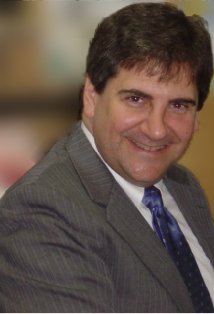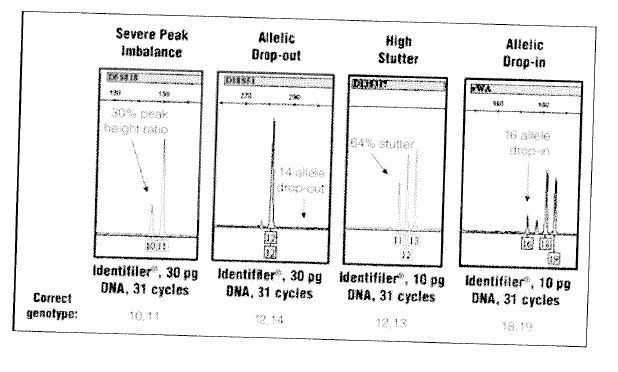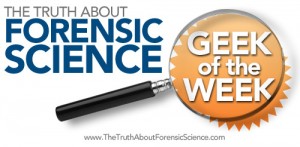The Forensic Science Geek of the Week
Please visit the www.TheTruthAboutForensicScience.com FaceBook fan page.
The week 95 “www.TheTruthAboutForensicScience.com Forensic Science Geek of the Week” honors goes to: George Schiro

According to his website, the following is published:
George Schiro, MS, F-ABC is a consulting Forensic Scientist operating a consulting company called “Forensic Science Resources” located in Cade, LA. He received a Master of Science in Industrial Chemistry-Forensic Science which included five hours of credit in Forensic DNA Analysis of Biological Materials and accompanying lab course, three hours of credit in Quality Assurance and Bioinformatics, three hours of credit in Biochemistry, two hours of credit in Forensic Analysis of DNA Data, and three hours of credit in Experimental Statistics University of Central Florida, Orlando, FL. He received his Bachelor of Science in Microbiology including three hours of credit in Genetics from the Louisiana State University, Baton Rouge, LA. He holds a certificate of Professional Competency in Criminalistics, and is Fellow of the American Board of Criminalistics, Specialty Area: Molecular Biology.
George Schiro is a forensic scientist with over 25 years experience. He has been court qualified as an expert in crime scene investigation/reconstruction, DNA analysis, shoeprint identification, blood spatter interpretation, latent fingerprint development, serology, forensic science, trajectory reconstruction, fracture match analysis, and hair comparison. He has qualified over 160 times in 30 Louisiana parish courts, two Louisiana city courts, federal court, and county courts in Arkansas, California, Florida, Mississippi, Missouri, Nevada, New York, Texas and West Virginia. He has also consulted on cases in 24 states, for the United States Army and Air Force, and the United Kingdom. Throughout his career he has worked approximately 3200 cases.
His work has been featured on TV shows and in books. He regularly consults with TVs and movies.
The CV of our Geek of the Week can be found here.
Congratulations to our Forensic Science Geek of the Week winner
OFFICIAL QUESTION:

- 1. What sort of concept is pictured above?
2. What forensic discipline is this from?
3. Are there any known controversies surrounding it?
Our Geek of the Week answered:
The concept pictured in the electropherograms is that low copy number (LCN) polymerase chain reaction (PCR) techniques may produce DNA types that do not accurately reflect the actual source of the DNA. LCN typically uses increased PCR cycle numbers on extremely low amounts of template DNA.
This is from the discipline of forensic DNA analysis.
The controversy surrounding it is that the LCN technique stretches the technology beyond the manufacturer’s recommended PCR cycle number and uses less template DNA than the manufacturer’s recommended amount. Some in the field believe that these stressors in the system will lead to inaccurate DNA results since these DNA kits were not designed and developmentally validated for LCN techniques. Others feel that with the proper internal validation studies and interpretation guidelines, LCN is an additional useful technique.
[BLOGGER’S NOTE: There were two Honorable Mentions:
- Christine Funk who wrote:
“1. What sort of concept is pictured above?The phenomenon displayed, peak height imbalance, allelic drop out and in, and high stutter occur when low levels of DNA are subjected to 31 amplification cycles. DNA peak heights from a single source are expected to be approximately the same. They appear imbalanced with low levels of DNA input. Alleles also are known to ‘drop out’ (or disappear from detection) when testing low levels of DNA. Allelic drop in (I like to call them ‘Volunteer alleles’) can also show up when testing low levels of DNA. Finally, ‘stutter’ occurs during amplification when a true chunk of DNA ‘breathes’, bending outward and making a copy 4 base pairs less than the original. This copy is then replicated throughout the rest of the amplification process. Typically, stutter appears around 10 percent of the higher, true peak (give or take, depending on the locus involved). ‘High stutter’ is yet another stochastic effect which occurs when testing low levels of DNA.
2. What forensic discipline is this from?
forensic DNA testing.
3. Are there any known controversies surrounding it?
Ummm, yeah. Since we can rely on these effects occurring, but cannot reliably determine when or in what form, interpreting low level DNA test results is subject to misinterpretation. The presence or absence of alleles can include or exclude possible contributors. When alleles drop out, or appear, or appear to be alleles when they are truly stutter, interpretation can be challenging at best.”
- Mehul B. Anjaria who wrote:
“These are electropherograms associated with forensic DNA analysis. The results depicted here are from performing PCR on samples of DNA using the Identifiler kit followed by capillary electrophoresis. The electropherograms show ‘peaks’ representing instrumental detection of DNA. The peaks are sized, classified, and labeled by software so that the types detected can be compared to the DNA types of known DNA samples.The Identifiler PCR process involves making copies of 16 areas of the DNA that are used for typing and comparison and adding a fluorescent tag to these copies. In the normal course of business the PCR process is run for 28 cycles using approximately 1 nanogram (1,000 picograms (pg)) of DNA.
The results shown here are for very low levels of DNA. A diploid human cell will have approximately 6 pg of DNA, so the results shown are for typing approximately 2–5 cells. This is referred to as ‘Low Copy Number’ (LCN) DNA testing. In an effort to boost the sensitivity of the testing, the PCR cycles have been increased from 28 cycles to 31 to create a greater number of copies of DNA for study.
This is controversial because it goes outside of the bounds of the manufacturer’s recommendations and unexpected results occur routinely. LCN is best limited to careful use as an investigative lead due to the inherent issues. In fact, protocols for interpretation frequently call for at least 3 runs of the testing to determine which results are the most consistent within the 3 tests, and therefore more likely to be reliable.
The results show issues that can occur with LCN typing. Essentially, you can lose information, lose the ability to judge whether a mixture is present, or even start seeing irreproducible results suggesting sporadic contamination. In short, it is difficult if not impossible to have strict interpretation guidelines for this sort of analysis since a range of expected outcomes is difficult to delineate.”
- Laura Magnuson who wrote: “Stochastic effects that randomly occur when PCR amplifying low amounts of DNA using an increased number of PCR cycles. The STR-typing kit, amount of DNA and number of PCR cycles along with the correct genotype for each example are listed at the bottom.”]
The Hall of Fame for the www.TheTruthAboutForensicScience.com Forensic Science Geek of the Week:
Week 1: Chuck Ramsay, Esquire
Week 2: Rick McIndoe, PhD
Week 3: Christine Funk, Esquire
Week 4: Stephen Daniels
Week 5: Stephen Daniels
Week 6: Richard Middlebrook, Esquire
Week 7: Christine Funk, Esquire
Week 8: Ron Moore, B.S., J.D.
Week 9: Ron Moore, B.S., J.D.
Week 10: Kelly Case, Esquire and Michael Dye, Esquire
Week 11: Brian Manchester, Esquire
Week 12: Ron Moore, B.S., J.D.
Week 13: Ron Moore, B.S., J.D.
Week 14: Josh D, Lee, Esquire
Week 15: Joshua Dale, Esquire and Steven W. Hernandez, Esquire
Week 16: Christine Funk, Esquire
Week 17: Joshua Dale, Esquire
Week 18: Glen Neeley, Esquire
Week 19: Amanda Bynum, Esquire
Week 20: Josh D. Lee, Esquire
Week 21: Glen Neeley, Esquire
Week 22: Stephen Daniels
Week 23: Ron Moore, B.S., J.D.
Week 24: Bobby Spinks
Week 25: Jon Woolsey, Esquire
Week 26: Mehul B. Anjaria
Week 27: Richard Middlebrook, Esquire
Week 28:Ron Moore, Esquire
Week 29: Ron Moore, Esquire
Week 30: C. Jeffrey Sifers, Esquire
Week 31: Ron Moore, Esquire
Week 32: Mehul B. Anjaria
Week 33: Andy Johnston
Week 34: Ralph R. Ristenbatt, III
Week 35: Brian Manchester, Esquire
Week 36: Ron Moore, Esquire
Week 37: Jeffrey Benson
Week 38: Pam King, Esquire
Week 39: Josh D. Lee, Esquire
Week 40: Robert Lantz, Ph.D.
WEEK 41: UNCLAIMED, IT COULD BE YOU!
Week 42: Steven W. Hernandez, Esquire
Week 43:Ron Moore, Esquire
Week 44: Mehul B. Anjaria
Week 45: Mehul B. Anjaria
Week 46:Ron Moore, Esquire
Week 47:Ron Moore, Esquire
Week 47:Ron Moore, Esquire
Week 48: Leslie M. Sammis, Esquire
Week 49: Ron Moore, Esquire
Week 50: Jeffery Benson
Week 51: Mehul B. Anjaria
Week 52: Ron Moore, Esquire
Week 53: Eric Ganci, Esquire
Week 54: Charles Sifers, Esquire and Tim Huey, Esquire
Week 55: Joshua Andor, Esquire
Week 56: Brian Manchester, Esquire
Week 57: Ron Moore, Esquire
Week 58: Eric Ganci, Esquire
Week 59: Ron Moore, Esquire
Week 60: Brian Manchester, Esquire
Week 61: William Herringer, Esquire
Week 62: UNCLAIMED IT COULD BE YOU!
Week 63: Ginger Moss
Week 64: Richard L. Holcomb, Esquire
Week 65: John L. Buckley, Esquire
Week 66: Jeff Sifers, Esquire
Week 67: Josh D. Lee, Esquire
Week 68: Dr. Barbara Vonderhaar, PhD.
Week 69: Christine Funk, Esquire
Week 70: Mehul B. Anjaria
Week 71: Ron Moore, Esquire
Week 72: Mehul B. Anjaria
Week 73: Josh D. Lee, Esquire
Week 74: Kim Keheley Frye, Esquire
Week 75: Mehul B. Anjaria and Peter Carini, Esquire
Week 76: Kim Keheley Frye, Esquire
Week 77: Mehul B. Anjaria
Week 78: Steven W. Hernandez, Esquire
Week 79: Kevin Feeney, Esquire
Week 8o: Justin Harris, Esquire
Week 81: UNCLAIMED. IT COULD BE YOU!
Week 82: Jay Tiftickjian, Esquire
Week 83: UNCLAIMED. IT COULD BE YOU!
Week 84: Steven W. Hernandez, Esquire
Week 85: Pat Arata, Esquire
Week 86: George Schiro
Week 87: Jay Tiftickjian, Esquire
Week 88: Rocky Babson, Esquire
Week 89: UNCLAIMED. IT COULD BE YOU.
Week 90: Joseph Rome, Esquire
Week 91: Chuck Ramsay, Esquire
Week 92: Laura Magnuson
Week 93: John L. Buckley, Esquire
Week 94: Unclaimed. It could be you!
Week 95: George Schiro



